Kill Screen Magazine's Blog, page 229
September 9, 2015
Sharp Flint brings a cartoonish beauty to the ice age
It’s hard for me to say no to new survival games, but only because I haven’t found the perfect one yet. The Long Dark, with its lovely low-poly snowscapes and focus on enduring the harsh wilderness rather than zombies or other creatures, is the closest I’ve come to a favorite. But now there’s a new contender: Sharp Flint, by the suitably named EATMEAT Games.
Sharp Flint is a paleolithic survival sim about hunting “titans of the ice age” like mammoths and megaloceros. Its earliest images from late last year depict a cold, colorless world with detailed, semi-realistic graphics, but it’s since transformed into something a lot more stylish.
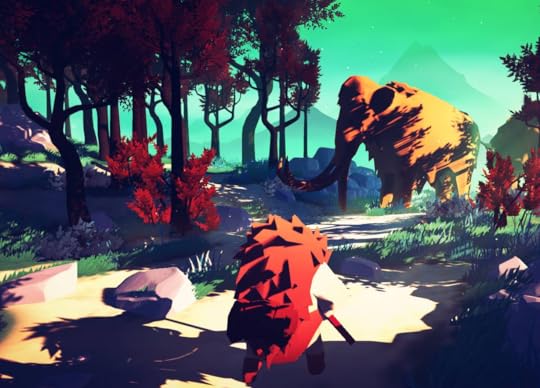
Now, its color palette is deep and vibrant, putting bright red trees against a sea green sky in one image, casting everything in the warm glow of sunset in another, and its low-poly look exchanges the grit of earlier screenshots for something welcomingly cartoonish.
According to EATMEAT Games, Sharp Flint will let you craft tools, weapons, and pelts, but besides that, some screenshots, and a few Vines of its creatures and characters, we don’t know much else.
It’s still in pre-production, so if you want to learn more, you can sign up for its newsletter on the Sharp Flint website or check out the project on IndieDB.
The future of communication is the .gif
On the convergence of Facebook and Magic: The Gathering.
September 8, 2015
The Rust Belt is like Mad Max in the American Midwest
Replace Mad Max’s Fury Road with the post-apocalyptic wasteland of the American Midwest and you might get something like The Rust Belt, a dusty looking truck combat game by Galvanic Games.
The Rust Belt puts you in control of a tow truck driver trying to get by in rural America after pollution has left Earth devoid of nearly every natural resource. While the upper classes have gone off and fled the planet, you’re left to travel through dangerous regions like the Eerie Desert, the Chicago Deadlands, the Detroit Militarized Zone, and the Iron Blighted City of Pittsburgh looking for supplies and building up a town.
Your only means of defense during your travels is the chain of your tow truck, which you can use to hook, throw, and smash things into other things.
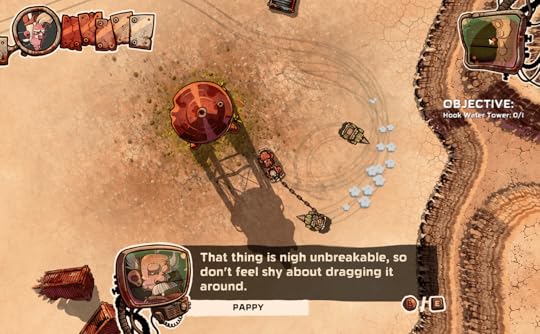
According to a blog post on the Galvanic Games website, The Rust Belt’s earliest prototype had you controlling a junk-collecting ship between galaxies, but the creators decided to switch the setting from space to rural America after realizing the ship mechanics felt a lot more like a car. They carried over the title The Rust Belt from the name of an industrialized asteroid field in the original game, Space Junk.
There are tons of space games out there already, and not nearly enough set in rural America (real or fictionalized) so the change of scenery is welcome.
Find out more about The Rust Belt on its website.
The original SimCity guide was basically a textbook on urban development
Back when the first SimCity was released in 1989, the editor of Computer Gaming World magazine, Johnny L. Wilson, was commissioned to write a guide for the city management sim called The SimCity Planning Commission Handbook.
In a manner befitting the complexity of the original SimCity, Wilson didn’t just want to confine his explanations of the game’s mechanics to the context of the game itself, but expand on those theories beyond the simulation, shedding light on the real-life parallels SimCity is built on.
A city is a machine with many moving parts
Richard Moss has a long, detailed post on the guide over at archive.vg, diving into the manual’s 200 pages to reveal an amount of detail and depth not just on SimCity and its many systems, but on the key principles and philosophies that make up real urban design.
So full of information is Wilson’s book, from basic urban development theory to mathematical formulas used by transportation planners, that it’s hardly a videogame strategy guide as much as it is a textbook. In one part of the book, Moss points out, you have a detailed breakdown of how SimCity handles its population growth system based on a principle called the rent/bid gradient, where property value is determined by how near it is to hubs of urban development, though elements of this are simplified for the purposes of the game.
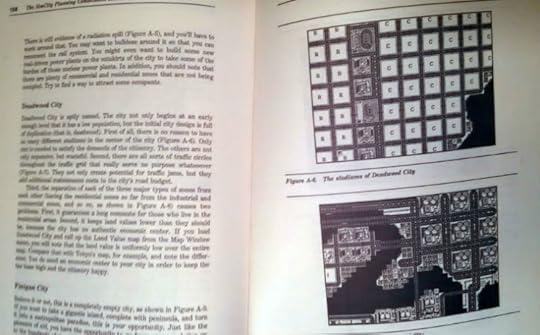
The depth of SimCity’s guide shouldn’t come as a surprise considering the game’s potential as an educational tool on its own, where students of urban design, economics, civil engineering, and more can put theories about city management to the test.
A city is a machine with many moving parts; SimCity didn’t try to trivialize that and neither did its guide book.
Read more on The SimCity Planning Commission Handbook on archive.vg. Images belong to Richard Moss.
Classic film noir is turned into adorable dioramas in this videogame
The city at night, only smaller.
A cave painting game about mammoths reveals the cycle of human greed
There isn't much Jurassic World gets right about normal human behavior, but the desire to feel connected to the planet's prehistoric past is one of them. "Jurassic World exists to show us how very small we are," says the dinosaur park owner to the dinosaur park director. Of course, the desire for this connection ends up biting all the humans almost parabolically in the ass. The modern day "Indominus rex" serves eventually as a reflection of the inner monstrosities of creatures who not only face their own smallness, but try to counteract it by playing god.
the hunters would be hunters no more
Meanwhile, in Mammoth: A Cave Painting, we find a more traditional "natural order" that is still somehow disrupted by human greed. While Jurassic World provided audiences with a physical monster to point at and blame, Mammoth: A Cave Painting demonstrates the more personal and subtle costs of human destruction. Playing as a symbol of the mammoth's fate, the game depicts a war between a mother mammoth trying to protect her young and a band of human hunters. Both parties clash, spilling blood on either side in a seemingly unavoidable cycle of retaliation. After the human beings murder the mammoth's young, her identity as mother is stripped away. Eventually, when the mammoth herd shrinks to the point of extinction and no more prey exists on the plains, "the hunters would be hunters no more" as well. Through the cycle of destruction, both the humans and the mammoth lose their identities and livelihoods.
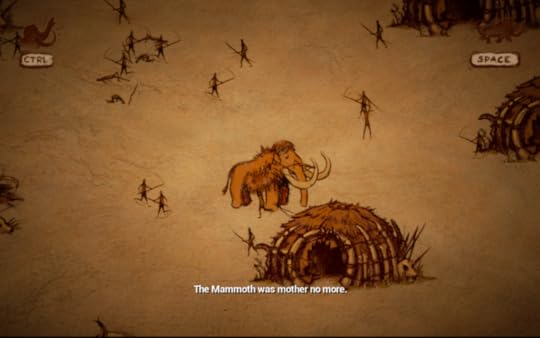
As a Ludum Dare entry, Mammoth: A Cave Painting was made by Inbetween Games (made up of former Spec Ops: The Line devs) in 48 hours and abides by the game jam's theme which states that "you are the monster." In a post-mortem blog post on the game, team member Jan David Hassel discusses the nuances of the game's approach to the theme. While people might try to paint the mammoth—who destroys huts and kills human hunters—as the true monster, Hassel's intentions were far from it. Despite the fact that the story is told by the hunters themselves, with human hand prints outlining the borders of the cave painting, their villainy proves to be the story's central moral. Since the hunters are the one's instigating, they are the true monsters, causing the mammoth to retaliate out of a survival instinct. "Which is a comforting thought because we get to shove the blame on these external evil beings that we have no connection to—if it wouldn't be for the fact that [...] we are all the monster. We are the hunters. We as humans have eradicated more species than anything that came before us including whatever killed the motherflipping Dinosaurs. It’s quite possible that we will add ourselves to this list eventually. We are the monsters."
We are the monsters
Mammoth: A Cave Painting even addresses the human desire to understand our own smallness. Taking inspiration from Chauvet Cave, the earliest known figurative cave drawings, "the animals are drawn immensely large in comparison to humans [...] in a way that goes beyond a realistic depiction of scale and probably has much more to do with the perception of meaning and power. So scale here is based more on emotional and magical evaluations rather than the ones our modern minds would focus on."
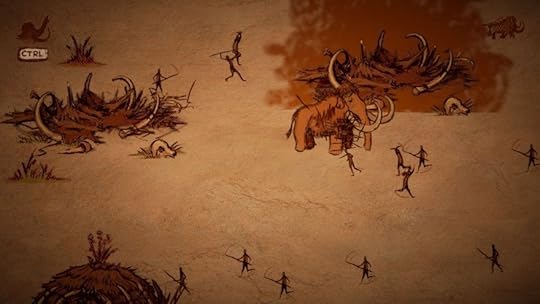
In the end, though, Mammoth: A Cave Painting presents one other option that absolves both the humans and the mammoth of their monstrous actions. As pointed out by commenter Hvedrung, both the hunters and the mammoth act only out of the need to eat and survive. So perhaps instead of blaming a single party, we can blame the merciless world itself for feeding on the perpetual suffering of its inhabitants.
You can play Mammoth: A Cave Painting in your browser for free.
Here's the GTA Movie trailer you never knew you wanted
Every new film that is at least tangentially about digital technology should open with a title card proclaiming: “At least it’s not yet another Steve Jobs movie.” So, here is the trailer for The Gamechangers, BBC Two’s film about the development of Grand Theft Auto and its accompanying moral panic. At least it’s not yet another Steve Jobs movie.
Some other “at least” disclaimers, while we’re at it: at least it’s not Hitman Agent 47; at least it’s not PIXELS; at least it’s not another Steve Jobs movie. Look, it's been a bad little while for movies about technology and the dudes who make technology. In the movies, it’s ALWAYS the dudes who make technology. So, what’s different in The Gamechangers?
Well, this time there’s a different dude making the technology. It’s Daniel Radcliffe, of Harry Potter (and The F-Word) fame, as GTA designer Sam Houser. He’s bearded and wearing urban-ish clothing, as if his geeky-cool “Alphabet Aerobics” rap on The Tonight Show With Jimmy Fallon had metastasized into a full persona. He’s a visionary! We know this because he proclaims, “We’re going to create the world’s first truly adaptable hero!” See? Visionary! But every visionary must have people who don’t believe in his dream, and so we have Bill Paxton playing attorney/scold Jack Thompson, who spent years trying to protect children from the scourge of GTA. Again: at least it’s not yet another Steve Jobs movie.
The fastest-selling entertainment product in history comes not from Silicon Valley, but is driven by a bunch of British game designers. Friends since their school days, they are led by the game's mastermind-designer, Sam Houser. By 2002, Sam and his creative team have constructed for their fans a vast virtual world, teeming with a high-octane mix of criminal characters, lethal weapons and outrageous storylines. Here you can even shape and sculpt your avatar, crafting their character and appearance to your personal preference.
Within this fantasy landscape, some players choose to take part in a series of dangerous missions, while others become immersed in a sprawling criminal underworld, killing cops, hijacking cars and running over pedestrians. And it's this that increasingly drives opposition to GTA. Because the game's violent gameplay leads to fierce opposition: from parents worried about its impact on children; from politicians, fearful of its influence; and, above all, from campaigners fighting to prevent the game being played by minors.

We have yet to escape the GTA morality debate. Maybe we never will. It is present in every new academic paper about violence in videogames and the subsequent rounds of aggregation that seek to confirm preexisting views about videogames as a medium. It is present in every cycle of outrage about a newly released videogame with problematic examples. In that respect The Gamechangers may not be the didactic videogame movie we need, but it could be the didactic videogame movie we deserve. At least it’s not yet another Steve Jobs movie.
Let the plant-growing sim Viridi brighten up your desktop
The virtual pet gets slowed way, way down.
September 4, 2015
Announcing Play/Off, NYC's first league of digital play
Games have been inherently social for most of our history, from basketball to chess. Why should videogames be any different? In our new event series, brought to you by Grind coworking spaces and arts and culture publication Kill Screen, we want to bring people together to play face-to-face in New York City’s first league of digital play.
Over the course of six events, teams will face off in games plucked from the weirdest, wildest corners of the gaming world, playing against each other for glory, prizes and a good time. No experience or skill is necessary; all that’s required is a game face. Teams should focus efforts on creating a co-ed, diverse group of players, but it's fine if you don't have a group of friends to compete with; you'll be matched with a team of other players.
Our first event will be held at Grind Broadway, on September 30th from 6:30 to 9:00. Keep your night free afterwards, though--in the interest of friendly competition, we'll be heading to a nearby bar to drink to victory and failure together.
Registration for the Fall Season will be $60 for all six events, but walk-ins are welcome at $15 per event. If all this sounds like a good time, click the button to register below!
Kill Screen Magazine's Blog
- Kill Screen Magazine's profile
- 4 followers




